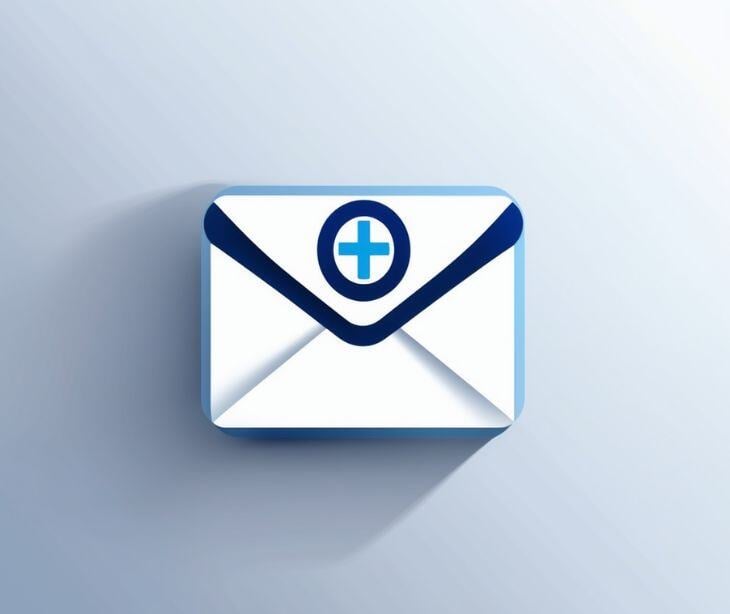3 min read
How email improves medication education for mental health patients
Kirsten Peremore
July 16, 2024

Email allows doctors and pharmacists to send information directly to patients, who can read about their medications at their own pace. This gives patients time to fully understand how to take their medications, what they're for, and what side effects they might have.
The need for medication education in the mental health field
According to a journal article published in the International Journal of Mental Health Nursing, “Factors associated with poor compliance include inadequate knowledge of the illness and the benefits and side effects of the medications (Dolder et al. 2002; Vanelli et al. 2001), as well as lack of awareness of the illness (Mutsatsa et al. 2003; Nose et al. 2003).”
When patients don't stick to their medication plans, it’s often not just about forgetting to take a pill. Many factors can cause this, like confusing schedules, fear of side effects, or simply not understanding why the medication is necessary. That’s where medication education steps in. Healthcare professionals help patients understand their medications, what each pill does, how and when to take them, and what side effects might pop up.
This kind of education is essential in mental health treatment. Mental health medications can be tricky; they work on your brain and can affect how you feel and think. Knowing what these meds do helps patients manage their conditions better and reduces their worry about taking them. Also, understanding possible side effects prepares patients to deal with them if they happen.
Skipping this educational step can really mess up treatment. Patients are more likely to skip doses or stop altogether without a good grasp of how their medications work. This not only slows down their recovery but can also make their condition worse. On the other hand, when patients are well informed, they’re more likely to follow their treatment plan closely, discuss any issues with their doctors, and get the full benefit of their medications.
Email as a medium for education
Email combines detailed information delivery with convenience and personal touch, which improves patient understanding and engagement. When healthcare providers use email, they can send comprehensive instructions about medications directly to their patients, who can then read through the details at their own pace. This method is especially beneficial because patients can revisit the email anytime they need to refresh their memory or clarify instructions, ensuring they always have access to information right at their fingertips.
This personalization makes each message more relevant, as emails can be tailored to fit the specific needs and treatment plans of each patient. For instance, if a patient is on a complex medication schedule, the email can break down the timing and dosages in a clear, easy to follow manner, helping to integrate the treatment seamlessly into their daily routine.
Patients can easily respond to HIPAA compliant emails with questions or express concerns, and healthcare providers can address these promptly, providing additional guidance or reassurance. This ongoing dialogue keeps patients well informed.
Best practices
- Create email templates that are easily customizable for individual patients. These templates should include basic sections like medication schedules, side effect management, and motivational affirmations.
- Incorporate infographics, charts, and visual timelines that clearly outline when and how medications should be taken. Visual aids help in breaking down complex information into digestible parts, which can be particularly useful for patients dealing with cognitive difficulties or anxiety.
- Include detailed, step by step guides for each new prescription. These should cover everything from how to open the medication packaging to how to take the medication (e.g., with water, with food, or on an empty stomach). This detail helps eliminate confusion and increase adherence.
- Embed links to video tutorials that explain the effects of the medications, how they work within the body, and why adherence is needed. These videos can be produced in simple language and a calm tone to help ease any anxiety about the medication.
- Develop a series of educational emails that go out over the first few weeks of a new prescription. Each email can focus on different aspects, such as dealing with side effects, understanding the benefits of adherence, and troubleshooting common issues.
- Include a frequently asked questions (FAQ) section in emails that addresses common concerns and queries about medications. This preemptive approach can reduce anxiety and the feeling of being overwhelmed.
- Use emails to encourage feedback on how the medication is affecting their mental health. This could be done through a simple form link embedded in the email, allowing patients to report side effects, effectiveness, and their emotional state since starting the medication.
- Implement a reminder system through email for refilling prescriptions, scheduling follow up appointments, or when it’s time to take their medication. These reminders can help maintain a routine.
See also: Top 12 HIPAA compliant email services
FAQs
What is personalization?
Personalization is the process of tailoring content or services to meet individual needs and preferences.
How does medical adherence influence treatment efficacy?
Medical adherence influences treatment efficacy by ensuring that medications are taken as prescribed.
Is the information in a medication education email considered PHI?
The information is considered protected health information (PHI) if it includes any details that can identify the patient and relates to their health care.
Subscribe to Paubox Weekly
Every Friday we'll bring you the most important news from Paubox. Our aim is to make you smarter, faster.






